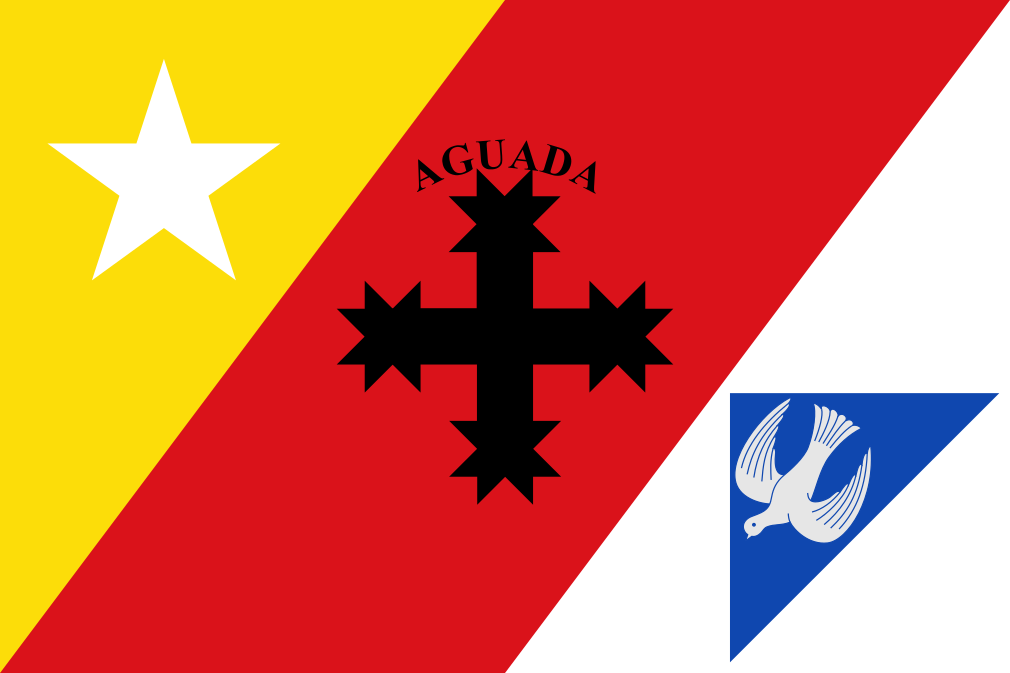|
Puente De Coloso
(The Coloso Bridge) also known as Bridge Number 1142 is located in Aguada on PR-418 at the marking, between the Guanábano and Espinar barrios in Aguada. It is a metal bridge, long which crosses over the Culebrinas River. The bridge rails are built in a warren truss style with steel posts. Because the bridge was used for the transport of sugarcane, it was built large enough for truck access. It was built by the Central Coloso, a sugarcane mill for its railway transport system of sugarcane harvest. The bridge allowed access to nearby Guanábano and Espinar barrios in Aguada, and Pueblo in Moca. Gallery Puente de Coloso, Aguada, Puerto Rico.jpg, Puente de Coloso See also * National Register of Historic Places listings in Puerto Rico __NOTOC__ This is a list of properties and historic districts that are listed on the National Register of Historic Places (NRHP) in Puerto Rico. There are 368 NRHP listings in Puerto Rico, with one or more NRHP listings in each of Puerto Ri ... [...More Info...] [...Related Items...] OR: [Wikipedia] [Google] [Baidu] |
Central Coloso
Central Coloso, also known as Coloso Sugar Cane Refinery, was a long-running sugarcane refinery in Aguada, Puerto Rico. The refinery was established in late 19th century becoming one of the biggest sugar emporiums in the island. It remained operational until 2003, becoming the last sugarcane refinery to cease operations on the island. History Early years The Coloso origins begin in the 19th century, specifically towards the end of the 1820s when the ''Caño de las Nasas'' estate was founded in Aguada. That estate functioned with a cattle-operated sugar mill producing approximately 100 sugar barrels a day. In the late 1860s, Emilio Vadí acquired the estate and changed its name to Coloso. In 1875, he changed it into sugar cane refinery. Peak in operations Upon turning Coloso into a sugarcane refinery, Emilio Vadí mechanized most of the production process. As a result, he produced 1,000 sugar barrels a day. That name increased during the 1870s. In 1879, Vadí made a partners ... [...More Info...] [...Related Items...] OR: [Wikipedia] [Google] [Baidu] |
Río Culebrinas
The Culebrinas River ( es, Río Culebrinas; pron. koo-le-BREE-nahs), is a river in northwest Puerto Rico. It originates in southwestern Lares for till it empties into the Mona Passage south of downtown Aguadilla. It goes through Lares, San Sebastián, Moca, Aguada and Aguadilla municipalities. It is 37.33 miles long and when it floods causes damage to infrastructure in a number of municipalities. Variant names and meaning Culebrina is Spanish for "forked lightning". In maps the river name has been spelled different ways: * Río Culebrinas * River Culebrinas * Rio de Colovrinas History Christopher Columbus is said to have anchored and come ashore near the mouth of the Culebrinas River in 1493. A stone cross monument was erected to mark the site, but it was destroyed by the 1918 San Fermín earthquake. In the 1898 ''Military Notes on Puerto Rico'' by the U.S. it is written that Culebrina River "is bounded on the south and east by the Lares Mountain ridge, and on the north ... [...More Info...] [...Related Items...] OR: [Wikipedia] [Google] [Baidu] |
Truss Bridge
A truss bridge is a bridge whose load-bearing superstructure is composed of a truss, a structure of connected elements, usually forming triangular units. The connected elements (typically straight) may be stressed from tension, compression, or sometimes both in response to dynamic loads. The basic types of truss bridges shown in this article have simple designs which could be easily analyzed by 19th and early 20th-century engineers. A truss bridge is economical to construct because it uses materials efficiently. Design The nature of a truss allows the analysis of its structure using a few assumptions and the application of Newton's laws of motion according to the branch of physics known as statics. For purposes of analysis, trusses are assumed to be pin jointed where the straight components meet, meaning that taken alone, every joint on the structure is functionally considered to be a flexible joint as opposed to a rigid joint with strength to maintain its own shape, and th ... [...More Info...] [...Related Items...] OR: [Wikipedia] [Google] [Baidu] |
Railway Transport
Rail transport (also known as train transport) is a means of transport Transport (in British English), or transportation (in American English), is the intentional movement of humans, animals, and goods from one location to another. Modes of transport include air, land (rail and road), water, cable, pipeline, an ... that transfers passengers and goods on wheeled vehicles running on rails, which are incorporated in Track (rail transport), tracks. In contrast to road transport, where the vehicles run on a prepared flat surface, rail vehicles (rolling stock) are directionally guided by the tracks on which they run. Tracks usually consist of steel rails, installed on Railroad tie, sleepers (ties) set in track ballast, ballast, on which the rolling stock, usually fitted with metal wheels, moves. Other variations are also possible, such as "slab track", in which the rails are fastened to a concrete foundation resting on a prepared subsurface. Rolling stock in a rail tran ... [...More Info...] [...Related Items...] OR: [Wikipedia] [Google] [Baidu] |
